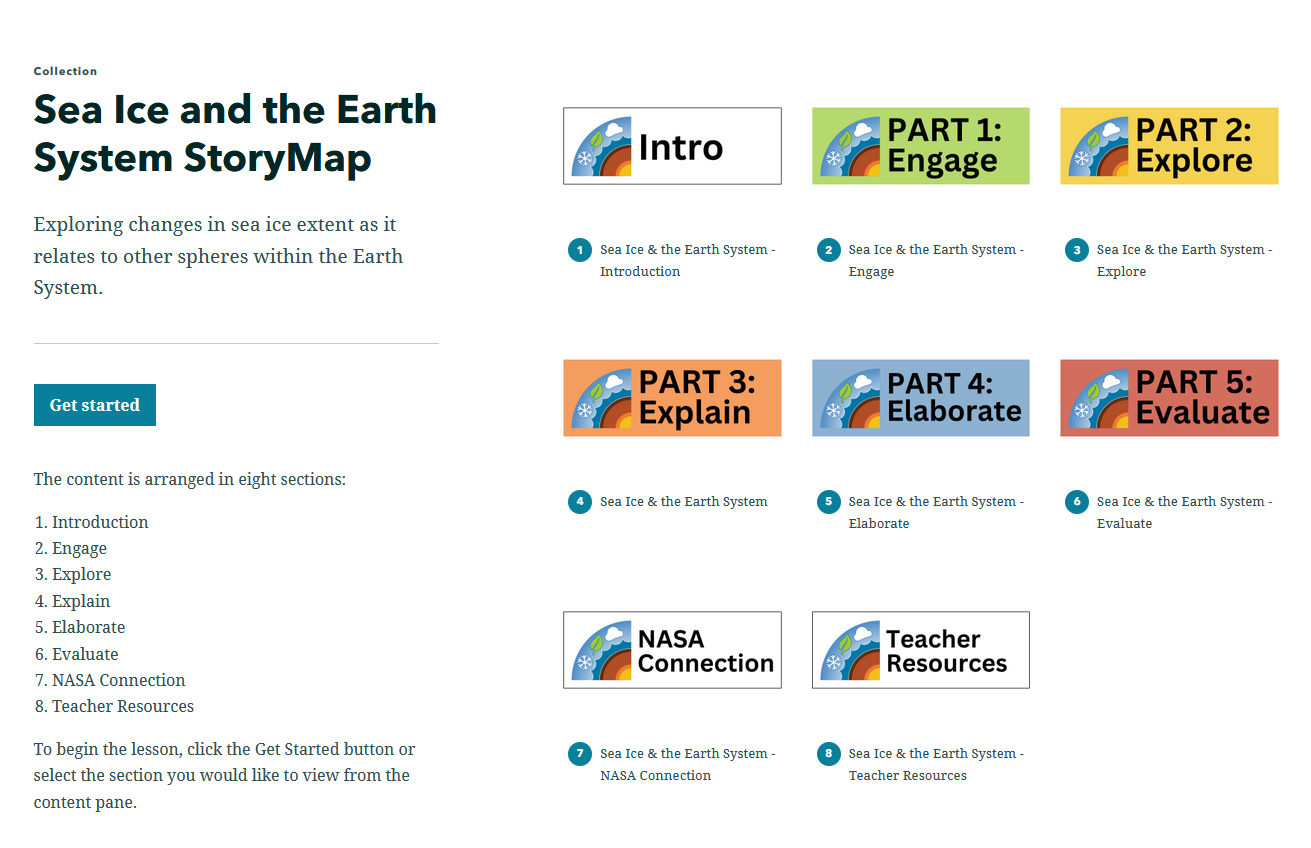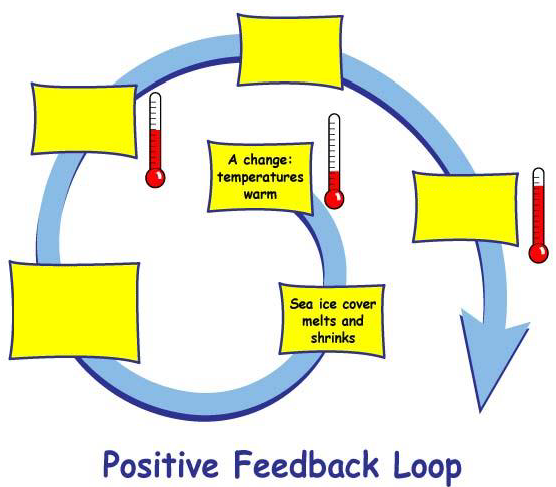Interactive Models
Sea Ice and the Earth System StoryMap
Overview
Using various visualizations (i.e., images, charts, and graphs), students will explore changes in sea ice extent as it relates to other spheres within the Earth System. Students will document their understanding of changing sea ice as it relates to the other spheres of the Earth System using an iterative concept map. This StoryMap is intended to be used with students who have access to the internet in a 1:1 or 1:2 setting.

Materials Required
Resources Needed Per Student:
- Student Data Sheet
- Computer/Tablet
- Internet Access
- Link to Sea Ice and the Earth System StoryMap
Directions
- Using an internet accessible device, students open the link to the Sea Ice and the Earth System StoryMap Lesson to begin their exploration of this phenomenon.
- Distribute the Sea Ice and the Earth System StoryMap Student Sheet. Have students navigate on their own through the Engage, Explore, Explain, Elaborate, and Evaluate tabs of the StoryMap to answer the questions and complete the activities on their student sheet.
Teacher Note
Sea ice is frozen seawater that floats on the ocean surface in both the Arctic and the Antarctic. This floating ice has a profound influence on the polar environment, influencing ocean circulation, weather, and regional climate. Sea ice is constantly changing with periods of growth and melting throughout the year. The amount of sea ice in the Arctic increases during the winter months, usually starting in September, and decreases during the summer months, usually starting in March.
To learn more, visit:
- The Snow and Ice Extent Phenomena page for background information
Teachers who are interested in receiving the answer key, please complete the Teacher Key Request and Verification Form. We verify that requestors are teachers prior to sending access to the answer keys as we’ve had many students try to pass as teachers to gain access.
Disciplinary Core Ideas:
- ESS2A: Earth Materials and Systems
- ESS3C: Human Impacts on Earth Systems
Crosscutting Concepts:
- Systems and System Models
- Stability and Change
Science and Engineering Practices:
- Developing and Using Models
- Analyzing and Interpreting Data
- Students will analyze maps and time series data to understand changes.
- Students will construct data-based explanations and conclusions.
- Students will compare multiple variables of the Earth System as they analyze global changes in the cryosphere.
- Students will consider the impact of environmental changes on wildlife.
- How do seasons influence changes in sea ice extent?
- How does sea ice melt influence the Arctic ecosystem?
- What effect does changing air temperatures have on observed trends in sea ice extent?
- How does sea ice melt change ocean circulation patterns?
- What is albedo and how does it affect the cryosphere?
National Geography Standard
How to use maps and other geographic representation, tools, and technologies to acquire, process, and report information from a spatial perspective.
- Internet Required
- One-to-One (tablet, laptop, or CPU)
- One-to-a-Group






